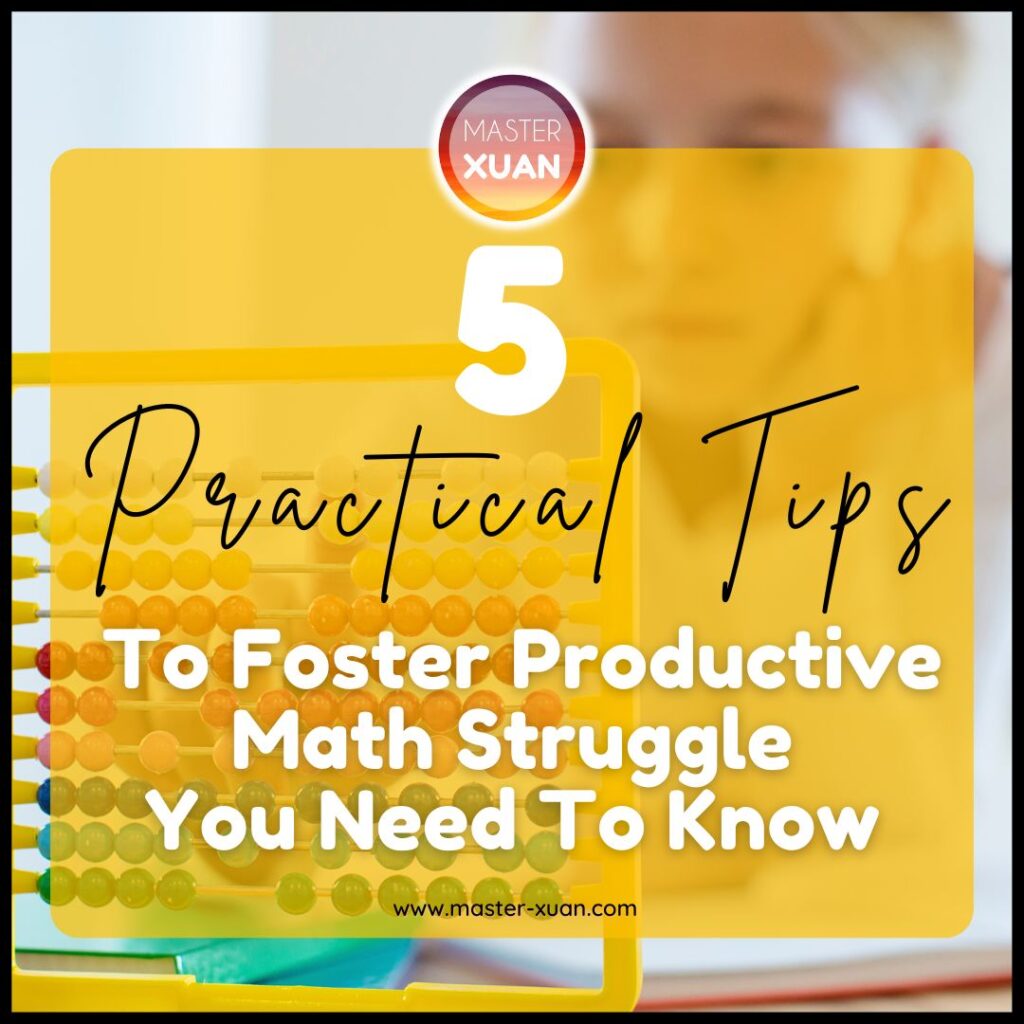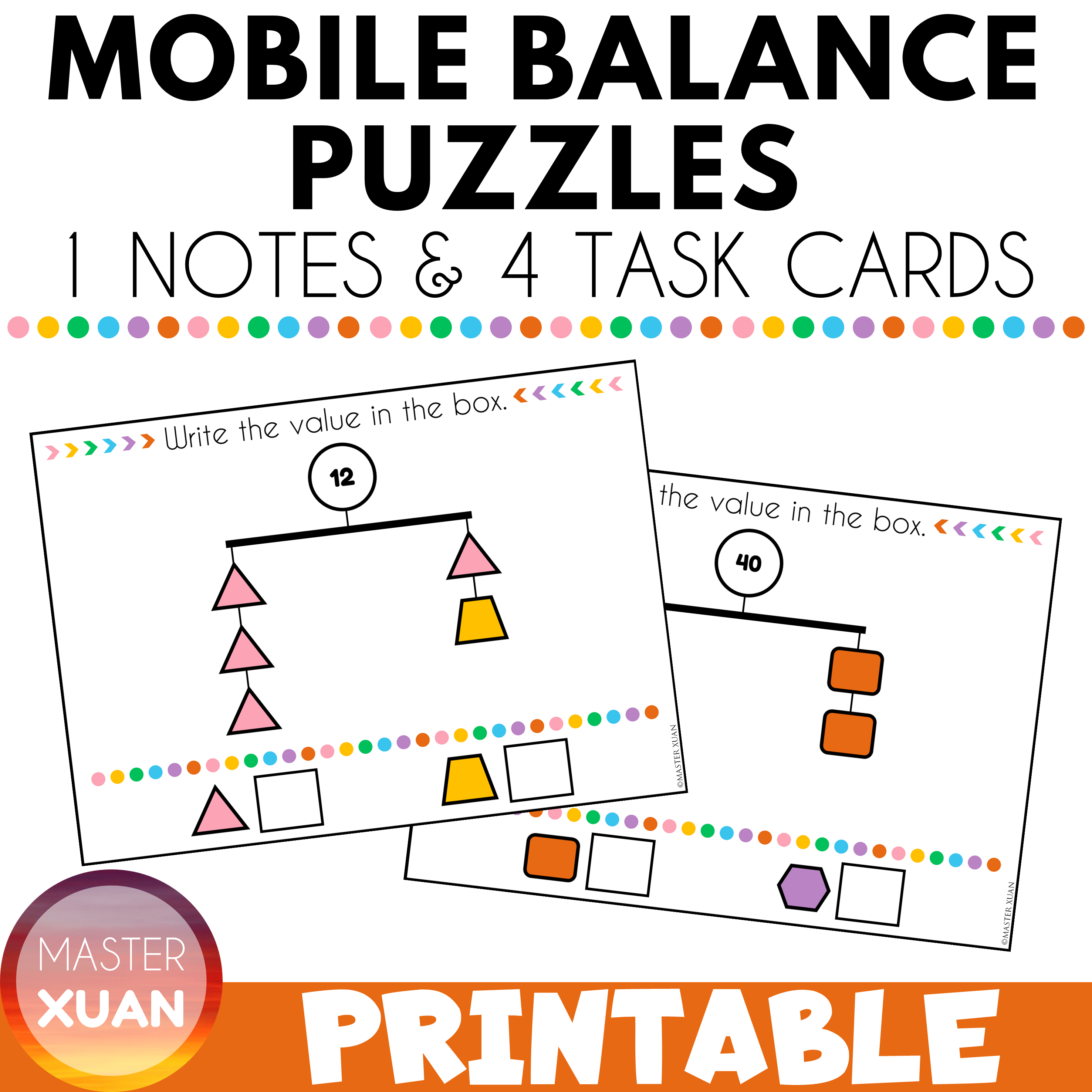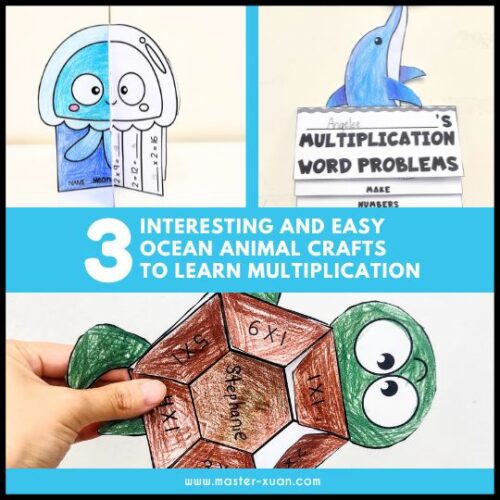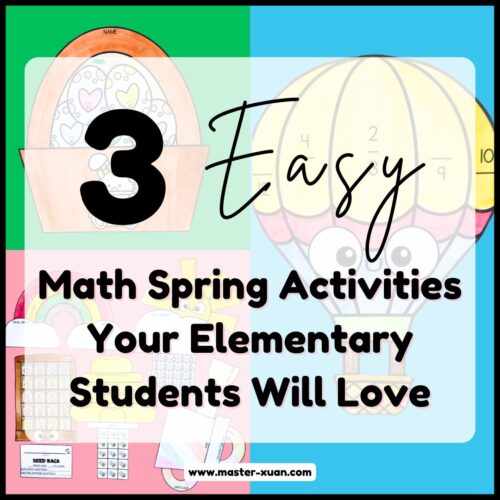In July 2024, I engaged in a comprehensive 15-hour book study on “Productive Math Struggle: A 6-Point Action Plan for Fostering Perseverance” by John J. SanGiovanni, Susie Katt, and Kevin J. Dykema. This insightful book challenges traditional teaching models like “I Do, We Do, You Do” and advocates for a reverse approach to encourage deeper understanding and perseverance in math learning.
In this blog post, I will share five actionable tips inspired by the book that you can implement in your classroom to promote productive math struggle. These strategies aim to help students navigate unclear challenges, fostering progress and advancing their learning.
What is Productive Math Struggle?
Productive struggle can be thought of as purposefully reacting to an unclear challenge so that progress is made or learning advanced.
Do note that not all struggles are created equal. How we deal with different struggles faced by different students are different too.
Ask Students To Create Multiple Representations
Asking them to make more than 2 increases the likelihood that quite diverse examples will be created. You can also ask students to use one representation in different ways.
In the book, the given example is to ask students to shade 3 grids differently so that each shows 0.60. Then, tell how each grid could look different but still represent 0.60.
Ask Students Open Questions & Allows Different Strategies
Select or modify a task to achieve the goal and invite struggle. One simple way is to task students with open questions rather than closed, funneling-type questions.
Open-ended questions go beyond simply asking for an answer. They prompt students to explain their reasoning, consider multiple solutions, and analyze the problem from various perspectives. This fosters curiosity, challenges assumptions, and encourages critical thinking.
We can introduce students to different strategies and instead of restricting them to specific strategies, let them choose the one that they are comfortable with. This empowers students to take ownership of their learning process and fosters confidence in their problem-solving abilities.
Adjust The Time
“It is often, if not always, more beneficial to finish it properly tomorrow than to rush to complete a task today.”
While deadlines exist, sometimes prioritizing a well-understood assignment completed tomorrow is more beneficial than rushing through a confusing one today.
This shift in focus allows students to grapple with the concepts effectively, leading to deeper understanding and retention.
Plus, it helps to convey the idea that the thinking process is more important than getting the task done or getting the answers.
Be Aware Of Early Finishers
“Don’t let early finishers teach others as it gives them power, communicates that being fast is better and therefore more valuable.”
I didn’t think of it this way before I read this book. So this is a key takeaway.
So maybe it is a better option to let them do some fast finishers activity like this:
This productive math struggle book tells us that we need to accept that faster doesn’t mean better, and that different students will learn at different rates.
We need to also accept that people who are good at math can struggle with different skills or concepts.
Accepting this variability fosters a more supportive learning environment.
Related Read: 15 Useful Activities For Early Finishers That Are Perfect For Elementary Teachers
Align Your Actions With The Values You Want To Imbue
Your actions need to reflect the values that you try to imbue so that students don’t get conflicting ideas. Plus it helps to reinforce the correct values you want them to have.
For example, if you don’t want students to feel that getting answers is more important than the thinking process, do not rush to get the answers when time is ticking.
Final Thoughts On Productive Math Struggle
Let’s be honest, implementing ALL the strategies in “Productive Math Struggle” can feel overwhelming.
Some might clash with your current methods, others with your own mindset, and hey, external factors can throw a wrench in the best plans.
Here’s the good news: that’s perfectly okay! There’s no magic formula for perfect math instruction.
Instead, focus on making small, incremental improvements year after year. Aim for 10% better, not a complete 180 – that’s a recipe for burnout.
And guess what? I’m still wrestling with implementation too.
You’re definitely not alone in this journey. We’re all in this struggle together, one growth mindset shift at a time!
To get a better idea, read the book for more examples and activities!
If you need more math resources to diversify, visit my TPT store!





